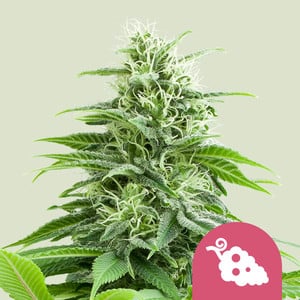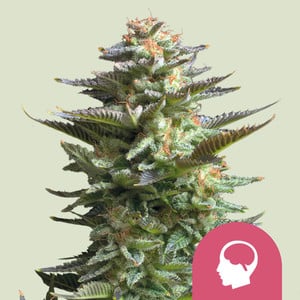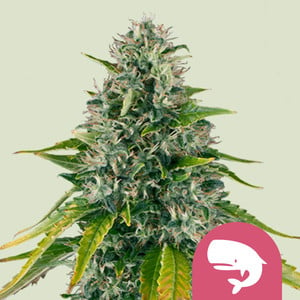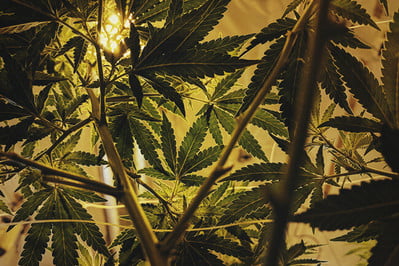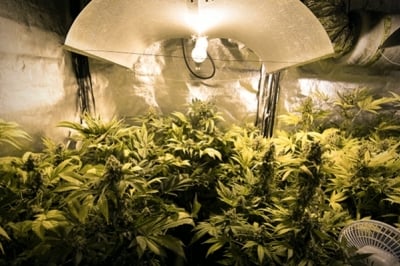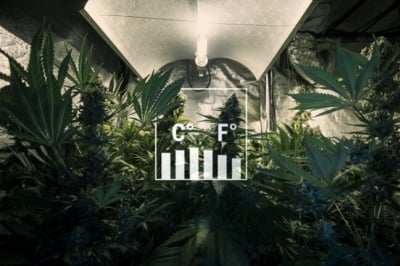Included FREE items

How To Protect Your Cannabis Plants From Heat Stress
- Growing cannabis step by step
- Cannabis growing basics
- Choosing your seeds
- How to germinate seeds
- The cannabis vegetative stage
- The cannabis flowering stage
- Harvesting cannabis
- Trimming, drying, and curing
- Choosing pots and soil
-
Growing indoors
- A Complete Overview Of Growing Cannabis Indoors
- Cannabis Cultivation Tips: How To Set Up Indoor Grow Lights
- How Many Cannabis Plants Can You Grow Per Square Metre?
- Indoor Cannabis Growing: Relative Humidity and Temperatures
- Hydroponics Cannabis Growing Guide (with diagrams)
- Cannabis Micro Growing: Growing Great Weed in Tiny Spaces
- Growing outdoors
- How to grow autoflowering cannabis
- Cannabis nutrients and pH
- Cannabis troubleshooting: Nutrients
-
Cannabis troubleshooting: Growing
- Cannabis Seed Germination — Troubleshooting Guide
- How to Deal With Pythium (Root Rot) in Cannabis Plants
- Slow Cannabis Plant Growth And What You Can Do About It
- How to Prevent and Fix Stretching in Cannabis Seedlings
- Watering Your Cannabis: How To Fix Over And Underwatering
- Understanding Male, Female, And Hermaphrodite Cannabis
- Identifying and Treating Common Cannabis Ailments
- How To Revive a Sick Cannabis Plant
- How to Avoid Mouldy Weed During Drying and Curing
- How to Prevent and Treat Dry and Crispy Cannabis Leaves
- What Cannabis Leaves Can Tell You
- Yellow Cannabis Leaves
-
Cannabis Strains Grow Report
- HulkBerry Automatic Grow Report
- Blue Cheese Auto Grow Report
- Purple Punch Automatic Grow Report
- Triple G Automatic Grow Report
- Do-Si-Dos Automatic Grow Report
- Green Gelato Automatic Grow Report
- Haze Berry Automatic Grow Report
- Purple Queen Automatic Grow Report
- Cookies Gelato Automatic Grow Report
- Sherbet Queen Automatic Grow Report
- Sweet Skunk Automatic Grow Report
- Medusa F1 Grow Report
- Cannabis plant training
-
Weed growing tips
- The Cannabis Plant Anatomy
- How to preserve seeds
- How Much Sunlight Do Outdoor Cannabis Plants Need To Grow?
- How to Control and Prevent Stretching in Cannabis Plants
- How And When To Transplant Your Cannabis Plants
- My Cannabis Plants Are Growing Too Tall: What Should I Do?
- Should You Worry About Purple Or Red Cannabis Stems?
- What To Do When Your Indoor Cannabis Won’t Flower
- How To Protect Your Cannabis Plants From Heat Stress
- How To Tell If Your Female Cannabis Plant Has Been Pollinated
- Growing Medical Marijuana
- Bud Washing: How to Clean Your Weed
Are your plants looking a little worse for wear? Despite following an accurate feeding, watering, and light schedule, you are frustrated to discover discoloured and deformed leaves on your cannabis plants. Don’t worry, you’re probably doing everything else correctly, it could just be the signs of heat stress.
Cannabis is a hardy and resilient plant, and many original landrace varieties adapted to survive in harsh regions such as the Hindu Kush mountain range and the tundras of Central and Northern Asia. Despite the resilience of this plant species, it can only deal with a certain amount of heat before its physiological systems can’t take it anymore.
Contents:
How Hot Is Too Hot For Flowering?
Cannabis plants appreciate heat during flowering—to a degree. The correct amount of heat will facilitate development, but too much can negatively impact growth and plant health. Aim to maintain a temperature of 18–26°C to keep your plants happy. If you live in a warm region, you can use a combination of fans and air conditioning to keep temperatures from rising above this limit.
How Can You Identify Heat Stress?
One of the telltale signs of heat stress is when the tips of fan leaves begin to curl upward. They’ll also exhibit a generally dry and withered look. This factor indicates that heat is the most likely culprit, removing the possibility of most nutritional deficiencies. As well as looking generally unwell, leaves will develop large brown spots or blotches that manifest in irregular shapes, primarily along the edges of the fingers of fan leaves. These unsightly scars are usually accompanied by yellow patches of discolouration. These symptoms mainly affect leaves located near the top of the canopy and around the perimeter of the plant—areas in the direct line of fire.
If you detect this set of symptoms in the vegetative phase, you can be sure that heat stress is at the bottom of it. Indoors, this could be caused by allowing the tops of your plants to grow too close to a powerful light source. Outdoors, it could be the result of a particularly brutal heatwave or an extremely hot and dry climate.
Heat stress manifests differently during the flowering phase. Sometimes, much to the shock of many growers, new buds can start to erupt out of the tops of older ones. This can cause what is known as a foxtail, a pillar of small buds and sugar leaves. This is a survival mechanism initiated by the plant as it attempts to form new buds capable of reproducing and generating seeds.
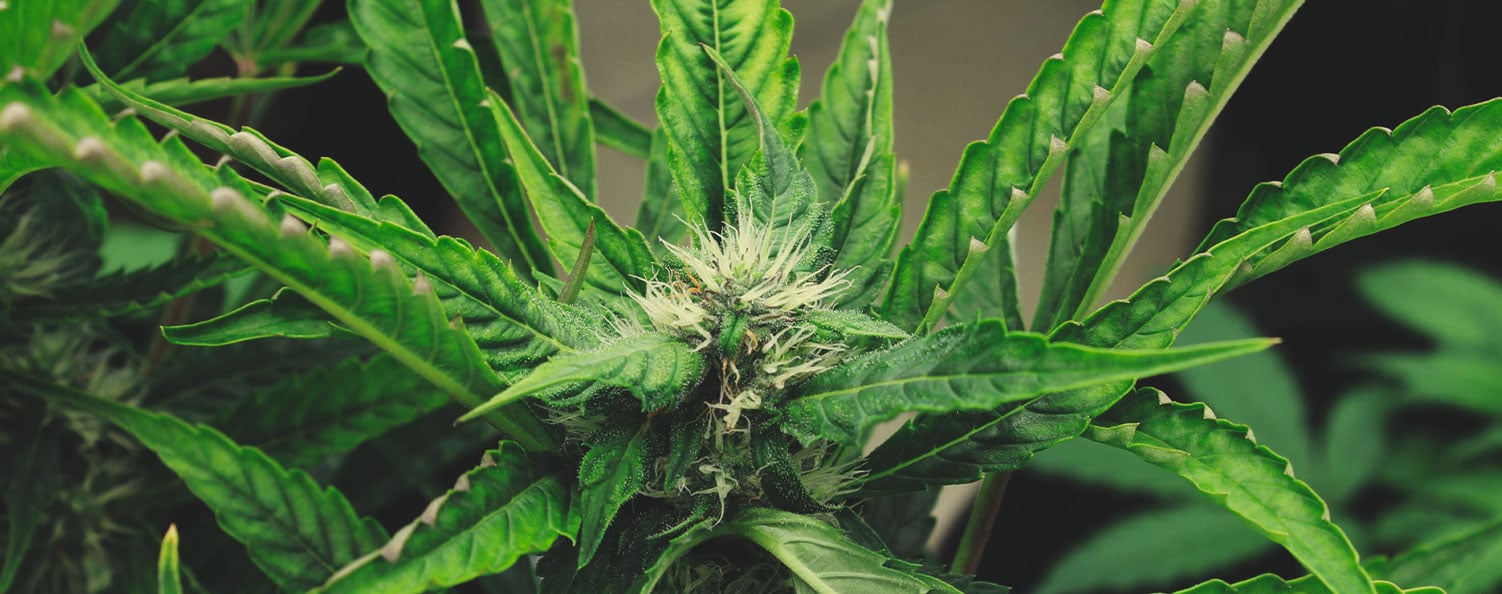
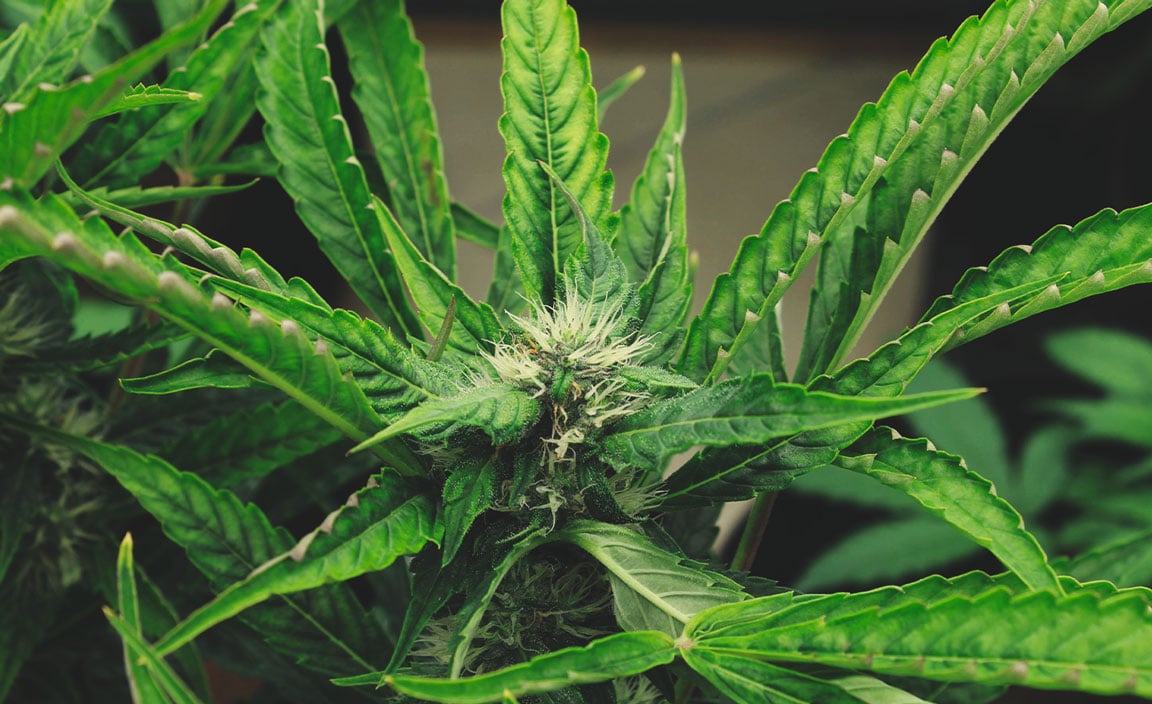
Below, we’ll cover indoor and outdoor methods to prevent and treat heat stress.
Dealing With Heat Stress Indoors
Heat stress can affect an indoor grow in multiple ways. For one, growers who live in hot climates may find it hard to regulate indoor temps during the dog days of summer.
Regardless of climate, grow tents can become very warm if certain measures aren’t put in place. The heat generated from different light sources can pound down upon leaves and subject them to significant stress. A lack of adequate fans and an exhaust system prevents convection currents that would otherwise cool down the interior of the tent. Here are some tips to help you avoid heat stress indoors.
1. Place Fans in the Grow Space
This is a simple and cheap solution to start cooling down your growing environment. Fans disrupt still, hot air and will effectively create a convection current that will help to cool things down. The wind generated by fans will also gently stress your plants into developing thicker and stronger stems.
2. Use Air Conditioning
This might seem obvious, but it’s definitely a viable solution. Indoor growers have the advantage of taking complete control over the microclimate of the grow tent, provided they have access to the right equipment. This is a fairly expensive option, but can be a real life-saver if you live in areas such as Spain or the southern United States. Place an air conditioning unit in your grow tent to keep cool air circulating.
3. Change the Position/type of Lighting
If your plants begin to exhibit signs of heat stress, consider how close they are to the light source. If only the top fan leaves are showing symptoms, then readjust the position of your lights so that they hang further away.
If changing the position makes no difference, then you might need to change the type of light you are using. Most lights put out a fair amount of heat, and if you’re growing in a confined space in a warm climate, things are going to heat up quickly. LEDs are a good option for growers dealing with these conditions. They put out a lot less heat than HID light sources; plus, they are often much cheaper to run.
4. Install an Exhaust System
An exhaust system is like a reverse fan. It works by sucking stale and hot air out of the grow space. If you have fans running at the same time, these will serve to replace old air with fresh and cool air. If you’re running a deaerator, it’s advised to fit it with a carbon filter that will remove any suspicious scents from blowing out into the surrounding area.
5. Use Supplements to Treat Damaged Plants
Some growers find success using supplements to treat the symptoms of heat stress. These may be effective, but will only work long-term if the environment is cooled down using the techniques mentioned above.
Seaweed or kelp extracts work well to remedy some of the effects of heat stress. They are loaded with minerals and nutrients that make plants more resistant to high temperatures. Then there's silicon, a compound that increases the resilience of cell walls, makes plants more resistant to heat and cold stress, and helps them absorb key nutrients such as zinc, copper, and phosphorous more easily.
6. Mycorrhizal Fungi
Species of mycorrhizal fungi form symbiotic relationships with cannabis plants and help them deal with heat stress. These lifeforms send small filaments known as hyphae inside cannabis roots. Here, plant cells envelope fungal cells and form joint structures called mycorrhizae.
Plants feed these fungi with sugars produced during photosynthesis. In return, the fungi act as an extension of the root network. They help plants to endure both biotic (living) and abiotic (non-living) sources of stress. Mycorrhizal fungi mitigate drought and heat stress[1] by pulling in water far beyond the reach of the plant root network.
How to Protect Against Heat Stress Outdoors
Outdoor growing is more difficult to control than the alternative. Crops are subject to the whims of the elements, as well as countless forms of pests and infections that can damage vitality and yield. Heat stress is no exception. Indoor growers have the advantage of full climate control, whereas outdoor growers have to deal with heatwaves, monsoons, and everything in between.
Heat stress is a prominent threat to those growing in warmer regions closer to the equator. Although increased levels of sunlight can be advantageous, too much can lead to heat stress symptoms. Here are some tips on how to protect your outdoor crop.
1. Time Your Watering Well
Watering in the correct quantities at the right time of day will help your plant cope with heat stress and prevent cannabis leaves curling up. But remember, too much water can quickly lead to crippling root rot; always let the top few centimetres of soil dry out before applying more water.
When it’s time for a drink, water the soil up to the point of saturation. Large raised beds require more water less frequently, whereas pots dry out faster. Outdoors, aim to water early in the morning or after sunset to avoid rapid evaporation. You should only apply foliar sprays during this time, too, in order to avoid evaporation taking place on delicate leaf tissues.
2. Mulching
Mulching helps to lock moisture into the soil and protect feeder roots near the surface from high temperatures. The practice also helps to shield beneficial microbes from the heat of the sun. There are two different mulching methods: dead mulch and living mulch.
Dead mulching involves layering dead organic materials on top of the soil. Options include:
- Hay
- Straw
- Grass clippings
- Compost
- Leaves
Important note: Avoid hay that contains seeds to prevent weeds from taking over, and material that contains the herbicide aminopyralid (AP) that will quickly kill off your cannabis crop.
Living mulch involves sowing seeds in close proximity to your cannabis plant. A high seed density will keep these plants small and stop them from overshadowing your cannabis plants. Living mulches shelter the soil, improve soil structure, and feed beneficial microbes by pumping exudates into the soil. Legume species will also fix atmospheric nitrogen. Living mulch options include:
- Crimson clover
- Chickweed
- Alfalfa
- Purslane
Important note: These plants will help to lock in moisture, but they also require water themselves. Make sure you monitor the dryness of your soil closely, and water more than you would give to cannabis plants in an otherwise empty bed.
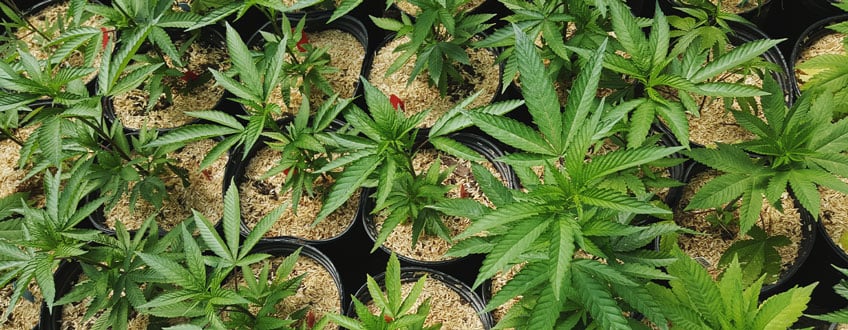
3. Avoid Stress
Stressing your cannabis plants in other ways will make them less able to bounce back from heat stress. Several techniques used during the growing cycle expose plants to varying degrees of stress. Under normal conditions, plants bounce back quite fast. However, throw excessive temperatures into the equation, and your plants might not recover.
Transplanting from a small container into a larger pot or bed shocks plants for up to several days. Avoid transplanting during high temperatures into unsheltered spots; plants need time to establish their root systems in new soil.
You should also avoid high-stress training techniques, such as topping and fimming, during periods of high temperatures. These methods involve controlled tissue damage to the vascular system of plants—including the xylem that transports water and nutrients.
4. Pots Are More Portable
If you’re growing outside in a warm climate, it’s a good idea to grow in large containers or pots as opposed to directly in the ground. This makes your plants portable and gives you the option of physically relocating them to a sheltered spot if the sun gets too intense.

5. Set Up a Temporary Shelter
Keeping your plants under a shelter all day long will inhibit photosynthesis and have a detrimental effect overall. However, making a temporary shelter using cloth or a tarpaulin can help to protect your crop during the peak heat of the day. Erect the shelter during the hottest hours, and let your plants bask in sunshine before the heat sets in and after it tapers off.
6. Outdoor Plants Can Benefit From Supplements, Too
Seaweed or kelp extract can help increase plant resilience both indoors and outdoors. Use the formula according to the manufacturer's instructions and give your plants some extra protection using these nutrient-rich substances.
Can Plants Recover From Heat Damage?
Yes. Your plants will recover from heat damage, as long as you take the appropriate action. Optimise your watering schedule, lay down mulch, and move containers to a more sheltered spot for a few days. Resist the urge to defoliate any damaged leaves until your plant has visibly recovered to avoid further stress.
Can Plants Come Back From Heat Stress?
Cannabis plants can fully recover from heat stress—so long as you catch it early enough. Heat stress leads to dehydration, which results in wilting and marijuana leaves curling up. If you manage to intervene before your plants undergo too much damage to their leaves and stems, you can use the strategies above to rescue them.
Start With a Heat-resistant Strain
There are thousands of cannabis strains available on the market, and each one has been selectively bred over time to display specific desirable traits. Some breeders have managed to create cultivars that are particularly resilient to high temperatures. You can significantly reduce the risk of heat stress by starting with one of these varieties. Here are three heat-resistant strains we recommend.
1. Fruit Spirit
Fruit Spirit is a hardcore strain that laughs in the face of high temperatures (within reason). This beast is the offspring of legendary parent strains White Widow and Blueberry. She features a closely balanced genetic makeup of 60% sativa genetics and 40% indica. Fuelled by 18% THC and a medium CBD level, she offers a high that relaxes the body and invigorates the mind. Her name is a tribute to the sugary and fruity tastes of her flowers, which dance across the tongue when smoked.
Fruit Spirit grows well in both indoor and outdoor environments. Indoor plants reach a height of 80–120cm, feature a flowering time of 8–10 weeks, and yield up to 425g/m². A single plant grown outdoors can reach up to 220cm in height and produce a harvest of up to 525g.

Fruit Spirit
|
|
Blueberry x White Widow |
|
|
375 - 425 gr/m2 |
|
|
80 - 120 cm |
|
|
9 - 10 weeks |
|
|
THC: 18% |
|
|
Sativa 30% Indica 70% |
|
|
475 - 525 gr/plant |
|
|
175 - 220 cm |
|
|
Early October |
|
|
Clear |
2. Amnesia Haze
Amnesia Haze is a tall sativa-dominant strain that thrives in warmer temperatures. Her large and tall flowers produce a massive THC level of 22% and a medium level of CBD. The high is electrifying, stimulating, and ideal for daytime use to boost focus and motivation. This cerebral effect is augmented by notes of earth and citrus.
Amnesia Haze is a highly productive variety that will reward those growing in sultry locations. Indoor plants reach a height of 140cm, have a flowering time of 9–11 weeks, and produce a large harvest of up to 650g/m². Plants grown outdoors under the beating sun reach a towering height of 210cm. Here, a single specimen provides a massive bounty of up to 700g, ready to harvest in late October.
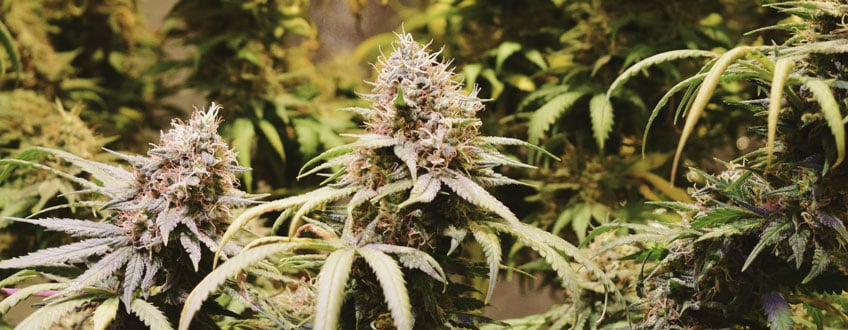
Amnesia Haze
|
|
Original Amnesia Haze |
|
|
600 - 650 gr/m2 |
|
|
80 - 140 cm |
|
|
10 - 11 weeks |
|
|
THC: 22% |
|
|
Sativa 70% Indica 30% |
|
|
650 - 700 gr/plant |
|
|
175 - 210 cm |
|
|
Late October |
|
|
Long Lasting , Physically Relaxing, Powerful |
3. Royal Moby
Royal Moby is a stunning specimen that boasts flowers and sugar leaves coated with trichomes. This sativa-dominant lady is the lovechild of Haze and White Widow, and oozes resin loaded with a THC concentration of 21%. This hardy variety can handle both hot and cold climates, and will feel right at home in a warm grow tent or sun-exposed garden.
Royal Moby isn’t fussy about her growing environment. Indoors, she’ll reach a height of 80–140cm and produce up to 600g/m². A plant grown outdoors will surge to a massive height of 2–3m and produce a rewarding harvest of 700g.
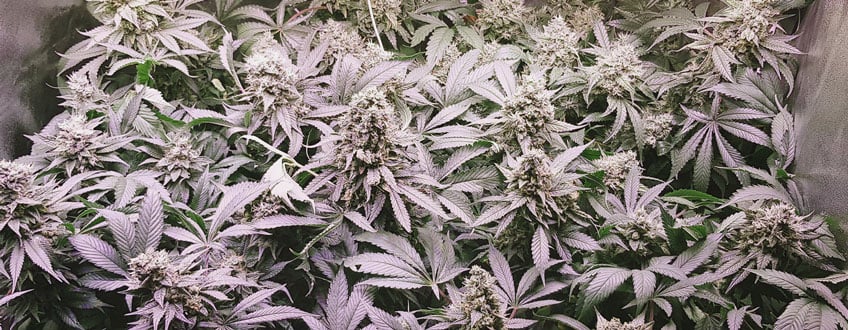
Royal Moby
|
|
Haze x White Widow |
|
|
550 - 600 gr/m2 |
|
|
80 - 140 cm |
|
|
9 - 10 weeks |
|
|
THC: 21% |
|
|
Sativa 65% Indica 35% |
|
|
650 - 700 gr/plant |
|
|
200 - 300 cm |
|
|
Late October |
|
|
Balanced, Clear, Stoned |
External Resources:
- Arbuscular mycorrhizal fungi mitigate negative effects of combined drought and heat stress on tomato plants - PubMed https://pubmed.ncbi.nlm.nih.gov
Disclaimer:
This content is for educational purposes only. The information provided is derived from research gathered from external sources.


























